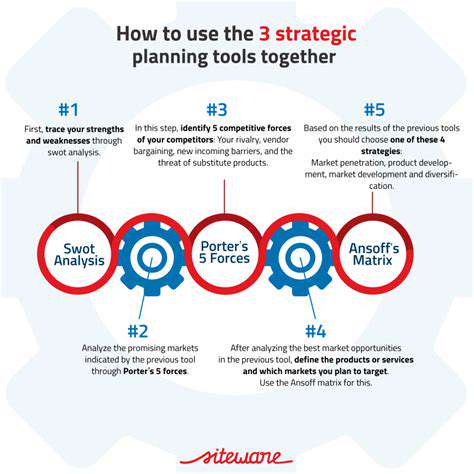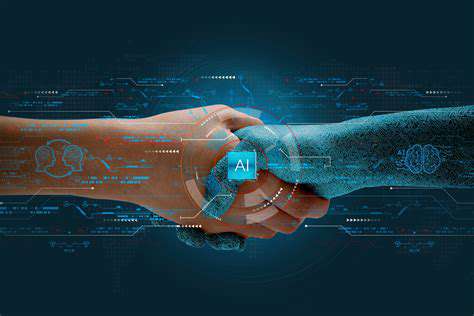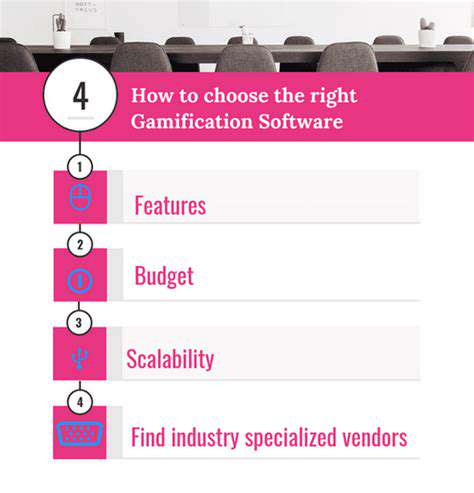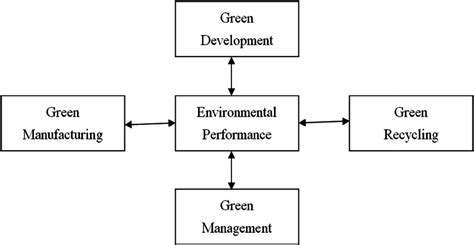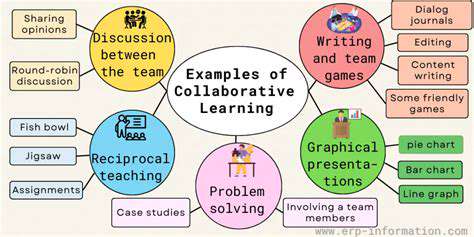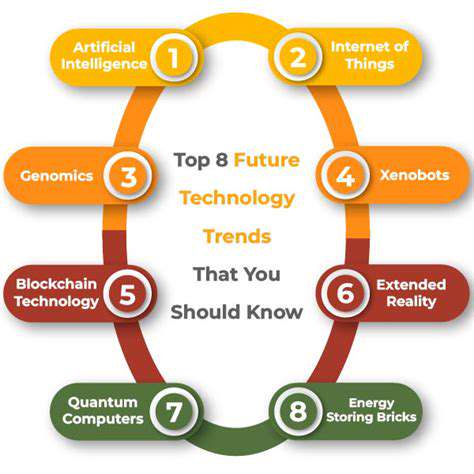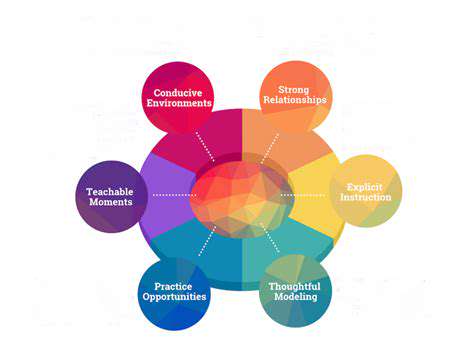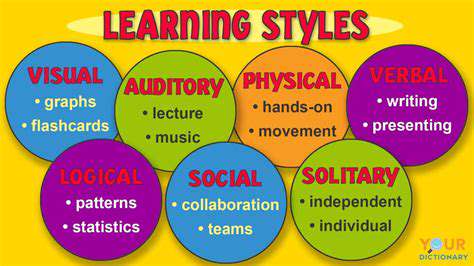Designing Engaging Immersive Learning Experiences
Beyond Visual Stimulation: Enhancing Engagement with Sound and Texture
Immersive learning experiences extend beyond the visual realm, encompassing a rich tapestry of sensory input. Integrating sound design, carefully crafted music, and even the introduction of tactile elements can elevate the learning experience from passive observation to active participation. For example, a virtual field trip to a rainforest could include ambient sounds of birdsong, rushing water, and rustling leaves, creating a more realistic and engaging environment. Similarly, incorporating tactile feedback, such as a simulated texture of a historical artifact, can add a crucial layer of depth to the learning process.
The interplay of different senses fosters a more holistic understanding. By engaging multiple sensory channels, learners are able to connect with the material on a deeper level, forming stronger memories and a more profound comprehension of the subject matter. This multi-sensory approach is particularly beneficial for students who learn best through kinesthetic or auditory means.
The Power of Emotional Connection: Storytelling and Empathy
A crucial aspect of immersive learning lies in the ability to evoke emotional responses. Storytelling, particularly when interwoven with interactive elements, plays a significant role in connecting learners with the material on an emotional level. By crafting compelling narratives that resonate with the learner's values and experiences, we can create a deeper sense of empathy and understanding. This is especially important when exploring complex historical events or social issues.
Interactive Environments and Personalization: Making Learning Dynamic
Moving beyond static displays, immersive learning environments can be designed to respond dynamically to the learner's actions and choices. Personalized learning paths, tailored to individual needs and preferences, can make learning more engaging and effective. This dynamic approach fosters a sense of ownership and control over the learning process, encouraging active participation and critical thinking.
Spatial Awareness and Navigation: Exploring Virtual Worlds
Immersive learning environments excel in creating a sense of spatial presence and navigation. Virtual reality and augmented reality applications can transport learners to various locations, from the depths of the ocean to the surface of Mars. This sense of spatial awareness allows for exploration, discovery, and a more profound understanding of the world around us, both real and virtual.
Tactile Feedback and Kinesthetic Learning: Engaging Hands-On Experiences
Traditional learning often overlooks the importance of tactile feedback and kinesthetic learning. Immersive learning platforms can incorporate interactive simulations and virtual manipulatives, allowing learners to manipulate objects, build structures, and conduct experiments in a safe and controlled environment. This hands-on approach fosters a deeper understanding of concepts and principles, particularly for subjects like science, engineering, and the arts.
Contextualization and Real-World Application: Bridging the Gap
Effective immersive learning goes beyond theoretical knowledge and emphasizes contextualization and real-world application. By integrating real-world scenarios and challenges into the learning experience, learners can see the practical implications of what they are learning. This connection to the real world makes learning more relevant, motivating, and impactful. For example, medical students can practice surgical procedures in a virtual operating room, or engineers can design and test structures in a virtual environment.
Accessibility and Inclusivity: Designing for Diverse Learners
Designing immersive learning experiences should prioritize accessibility and inclusivity, catering to the diverse needs of all learners. This includes considering different learning styles, disabilities, and cultural backgrounds. Employing various visual and auditory cues, and providing alternative text options for visual impairments, are important considerations. By designing inclusive environments, we ensure that all learners can fully participate and benefit from the immersive learning experience.
Leveraging Technology for Interactive Learning

Streamlining Communication
Modern technology provides unparalleled opportunities to streamline communication, enabling businesses to connect with customers and colleagues more effectively than ever before. This enhanced connectivity fosters stronger relationships and facilitates seamless collaboration, ultimately leading to improved productivity and efficiency across the board. The ability to instantly share information and receive feedback accelerates decision-making processes, allowing businesses to respond quickly to market demands and customer needs.
Utilizing platforms like instant messaging, video conferencing, and project management software can significantly reduce communication barriers between teams, departments, and even geographically dispersed locations. These tools enable real-time interaction, fostering a sense of shared purpose and collective responsibility.
Enhancing Customer Experience
Technology plays a pivotal role in enhancing the customer experience, providing businesses with tools to personalize interactions and gather valuable insights into customer needs and preferences. This data-driven approach allows companies to tailor their offerings and services to better meet individual customer demands.
Customer relationship management (CRM) systems, for example, allow businesses to track customer interactions, manage data, and personalize communications. This level of personalization significantly improves customer satisfaction and loyalty, ultimately driving revenue growth.
Furthermore, online platforms and mobile apps provide customers with convenient access to information, products, and services 24/7, leading to increased accessibility and improved customer satisfaction. Companies can utilize these tools to offer personalized recommendations, track order status, and provide prompt customer support, all contributing to a positive and memorable customer experience.
Improving Operational Efficiency
Technology empowers businesses to optimize their operational processes, leading to significant cost savings and increased efficiency. Automation of routine tasks, like data entry and reporting, frees up employees to focus on higher-level responsibilities, improving overall productivity.
Implementing advanced analytics tools can provide businesses with valuable insights into operational data, revealing areas for improvement and enabling proactive decision-making. This data-driven approach allows organizations to optimize resource allocation, identify bottlenecks, and implement strategies to maximize efficiency and profitability.
Furthermore, inventory management systems and supply chain solutions can reduce lead times, minimize waste, and optimize logistics, ultimately strengthening the entire operational chain. By streamlining these processes, companies can achieve significant cost reductions and enhance their overall operational performance.
Facilitating Innovation and Growth
Technology acts as a catalyst for innovation and growth, enabling businesses to explore new markets, develop cutting-edge products, and adapt to evolving customer needs. Digital tools and platforms provide access to a wider pool of talent and resources, fostering collaboration and knowledge sharing across geographical boundaries.
The ability to rapidly prototype and test new ideas, fostered by technological advancements, accelerates the product development cycle. This rapid iteration process allows businesses to quickly adapt to shifting market conditions and customer preferences.
Furthermore, access to global markets through e-commerce platforms and online marketing strategies opens up new avenues for growth and expansion, enabling businesses to reach a broader customer base and achieve greater profitability. The potential for innovation and growth is significantly amplified by the power of technology.


Read more about Designing Engaging Immersive Learning Experiences
Hot Recommendations
- The Gamified Parent Teacher Conference: Engaging Stakeholders
- Gamification in Education: Making Learning Irresistibly Fun
- The Future of School Libraries: AI for Personalized Recommendations
- EdTech and the Future of Creative Industries
- Empowering Student Choice: The Core of Personalized Learning
- Building Community in a Hybrid Learning Setting
- VR for Special Education: Tailored Immersive Experiences
- Measuring the True Value of EdTech: Beyond Adoption Rates
- Addressing Digital Divide in AI Educational Access
- Preparing the Workforce for AI Integration in Their Careers

